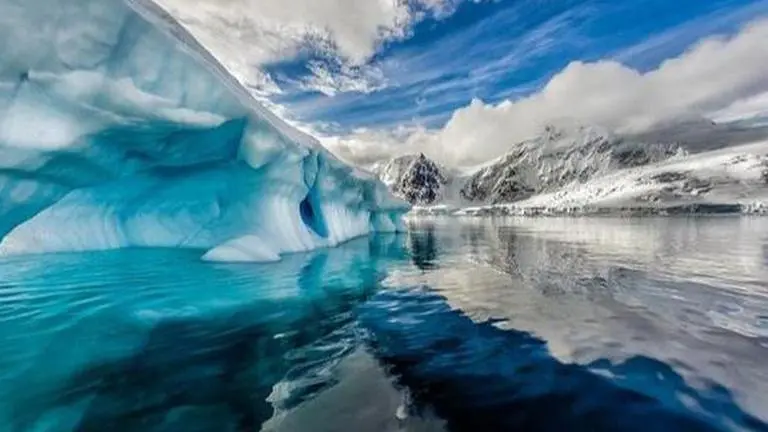Updated 19 December 2021 at 00:08 IST
Antarctica's Thwaites Glacier on edge of collapse; sea level may rise by 10ft in 10 yrs
The Thwaites Glacier also known as "doomsday" glacier, in Antarctica, is on the verge of slipping into the ocean as the ice shelf holding it back could crack.
- Science News
- 3 min read

The Thwaites Glacier also known as "doomsday" glacier, in Antarctica, is on the verge of slipping into the ocean as the ice shelf holding it back could crack, scientists warned. The Florida-sized glacier could raise sea levels by at least a foot in the next decade, according to scientists.
During a press conference, Erin Pettit, associate professor of earth, ocean, and atmospheric sciences at Oregon State University, said, "I visualised it somewhat similar to a car window where you have a few cracks that are slowly propagating, and then suddenly you go over a bump in your car and the whole thing just starts to shatter in every direction. The collapse of this ice shelf will result in a direct increase in sea-level rise pretty rapidly."
Warm water was discovered beneath the Thwaites glacier in West Antarctica in January 2020, according to experts, which might speed up the melting of the 74,000-square-mile glacier. The ice melting into the Amundsen Sea from the Thwaites already contributes for around 4% of global sea-level increase.
"The satellite imagery that we've been following, that it's going to essentially bypass that pinning point and start fracturing and falling apart. It's a little bit unsettling," Pettit said.
Glacier cracking due to warm water beneath it
However, according to scientists, the eastern ice shelf keeping the glacier in place has started rapidly accelerating cracks that might cause it to collapse within the next three to five years, bringing the Thwaites glacier to an end. The ice shelf would not contribute to a rise in global sea levels by itself, but the glacier would. The Thwaites Glacier would be exposed to ocean water if it collapsed, but the glacier is already cracking due to the warm water beneath it.
When the glacier is exposed, the multinational team of scientists fears ice cliff collapse, which occurs when glacier chunks exposed to ocean water break off and fall into the water. If the glacier continues to collapse, it would endanger many coastal communities throughout the world, which are already growing more unsafe to live in as sea levels rise.
Advertisement
'Glacier will not last long,' Expert predicts
The glacier is the widest in the world, according to Ted Scambos, a senior research scientist at the Cooperative Institute for Research in Environmental Sciences, and if it collapses, it will also collapse surrounding glaciers, The Hill reported. The glacier could survive on its own, according to Scambos, but getting a clearer image of how the glacier will behave during the next 100 years will be critical. However, all indications are that the glacier will not last long, he concluded.
Within less than a decade, there will be a tremendous alteration in the face of the glacier, Sambos predicted. Its outflow pace has doubled in the previous 30 years, and the glacier holds enough water to raise sea levels by more than 2 feet. And if it drags the neighbouring glaciers with it, it might result in much more sea-level rise, up to 10 feet.
Advertisement
(With inputs from Agencies)
Image: Unsplash
Published By : Aparna Shandilya
Published On: 19 December 2021 at 00:08 IST
